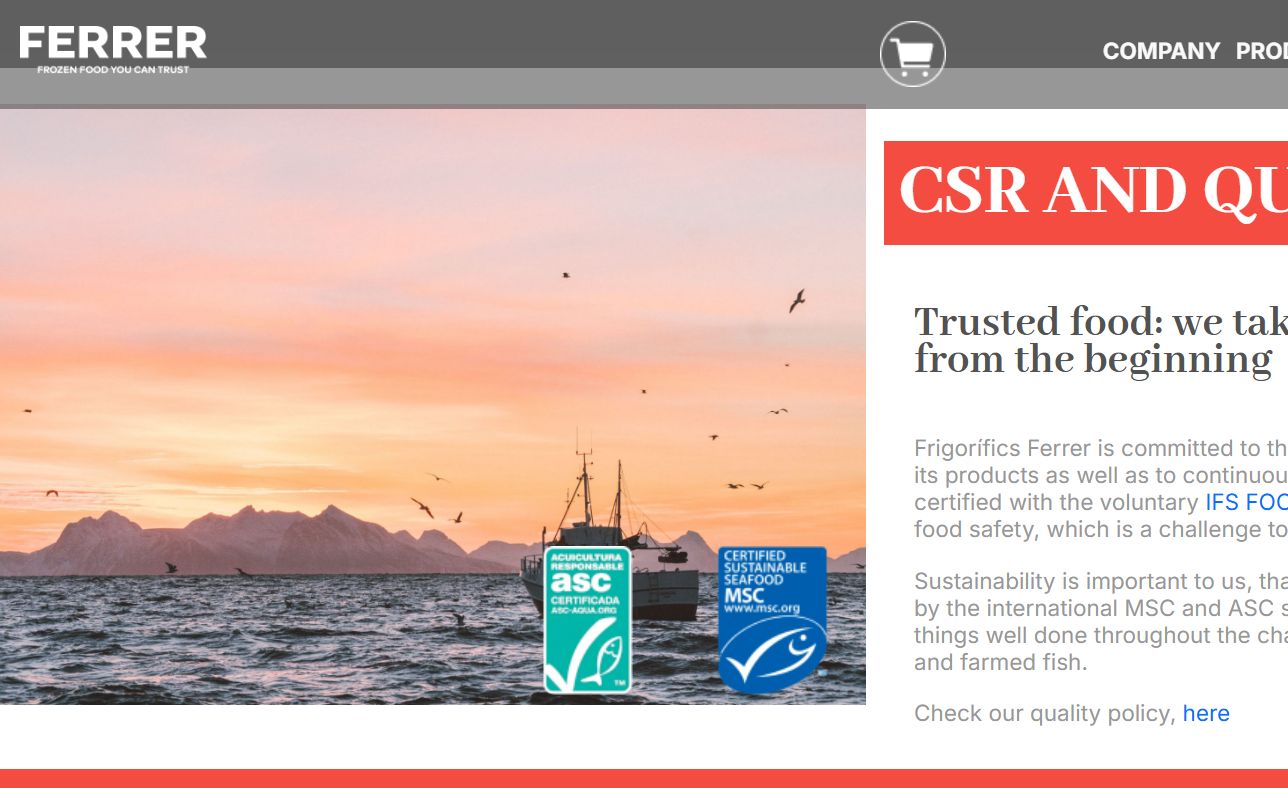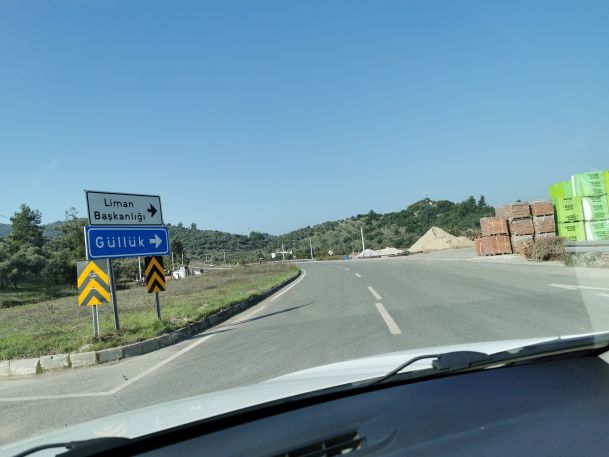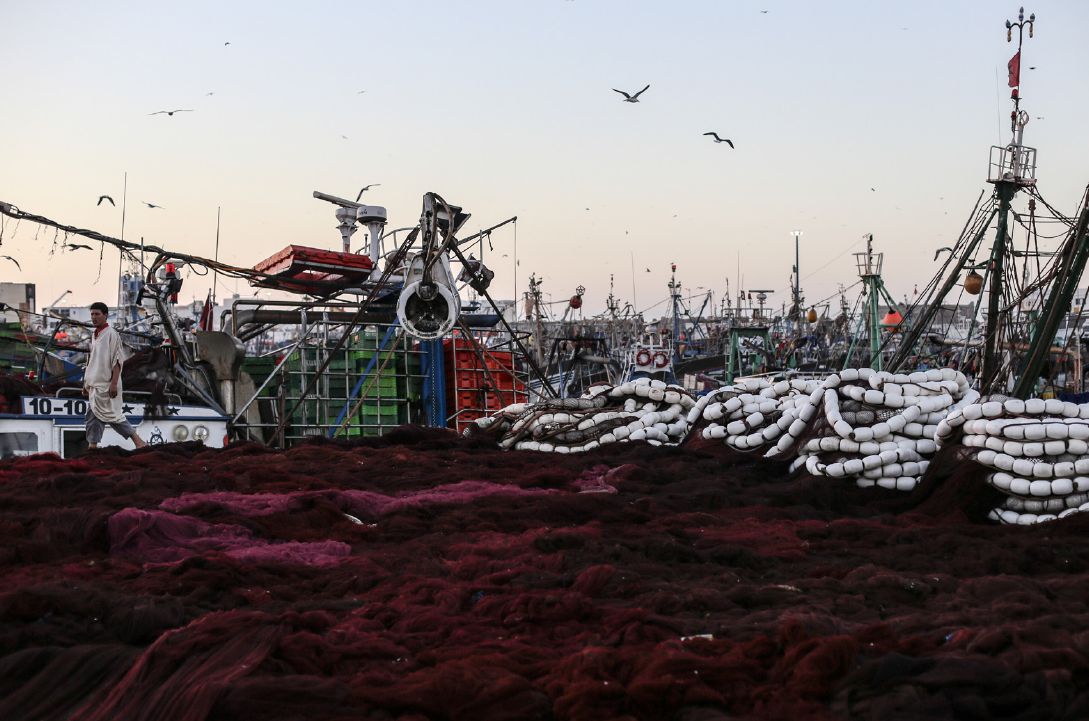
Half of Moroccan shellfish exporters approved for export into the EU, are in fact located in occupied Western Sahara.
On 12 December 2023, the EU updated its list of approved establishments in Morocco permitted to export live bivalve molluscs (such as mussels, clams, oysters or scallops) to the Union. Half of the listed exporters are located in occupied Western Sahara, not in Morocco - indicative of the importance of the territory's growing aquaculture sector for the Moroccan government.
In 2024, the EU Court of Justice is to issue its final ruling on applying the EU-Morocco trade liberalisation agreement in occupied Western Sahara. Through that agreement, the products listed above come into the Union free from tariff, whereas they'd otherwise be subject to a 9% rate. In September 2021, the EU's General Court ruled the application of the deal to Western Sahara illegal. The deliberation by the higher Court, the EU Court of Justice, that is to be concluded in 2024, ensues the EU Commission's and Council's appeal of the 2021 ruling. As it stands, the agreement continues to be applied to this category of products originating in Western Sahara for the time of the appeal process.
The recently updated list of establishments permitted to export to the Union includes 7 firms in Dakhla, and 2 in Boujdour. The establishments in Dakhla are three production firms (Boutalha, Boutalha Nord 1 and PK25 Baie de Dakhla in Dakhla), in addition to four dispatch centres, three of which double as purification centres. The establishments in Boujdour are one production firm, Aoufist, and one dispatch centre.
The EU list confirms the growing significance of Western Sahara for Morocco’s aquaculture production. According to the figures [or download] of the Moroccan government, production in Dakhla alone amounted to 64,77% of the “national total” production in 2022.
In terms of value, the share of Dakhla in Morocco’s total aquaculture production is even higher: in 2022, the production in Dakhla was worth over 81.3 million Dirham, against a total value of 101 million Dirham - thus corresponding to 80.5%.
WSRW documented in 2021 how EU taxpayers' money was used to develop this industry in the occupied territory.
Morocco first articulated its policy to develop its marine aquaculture potential in 2009, in the ‘Halieutis Strategy’. Two years later, the Moroccan National Agency for the Development of Aquaculture (ANDA) was created. Concrete planning of projects kicked off in 2012, focussing on five regions - though one of those regions, Dakhla-Oued Eddahab, corresponds to the southern half of occupied Western Sahara.
So which are these projects?
Practically all aquaculture farming that is taking place in Dakhla today, was part of a tender launched by ANDA in 2015, called “Développement de projets d’aquaculture marine: dans la région d’Eddakhla-Oued Eddahab”. The tender explains that at that time, there were only two shellfish farms active in the Bay of Dakhla: in Boutalha and in Duna Blanca, both focusing on oyster farming. WSRW presumes that another farm, in Tiniguir, was being developed at the time, having been authorized by the Moroccan government the year before.
The tender divided the area between the two bays in three zones: M1, corresponding to Dakhla Bay; M2, corresponding to the zone in between the two bays, alongside the fishermen town of Labouirda; and M3, corresponding to the Bay of Cintra.

In the Dakhla Bay (M1), the tender invited for exploitation of 520 plots where oysters, clams, abalone (or similar species) or algae could be farmed. Alongside Labouirda (M2), 60 plots were open to shellfish farming while 55 plots had been made available for algae production. Further south, in the Bay of Cintra (M3), 243 plots were ready for shellfish, algae or fish farming.
ANDA’s geoportal allows for an overview of different aquaculture projects in Morocco and occupied Western Sahara. The portal shows that most activity is indeed taking place in Dakhla, though there is also algae-production offshore Boujdour and some near the border between Western Sahara and Morocco.
Today, in zone M1 (Dakhla Bay), there are five shellfish farms that were mentioned in the 2015 tender:

- Boutalha, consisting of 76 different sizes of parcels that have been carved out for oyster and clam farming. The ANDA geoportal indicates that all parcels are either operational or authorised to start exploitation (41 plots of 2 ha for clams, 32 plots of 2 ha for oysters, 1 plot of 40 ha for oysters, 1 plot of 120 ha for oysters, 1 plot of 20 ha for oysters). Prior to the 2015 tender, Boutalha already hosted the first oyster farm in the area, inaugurated in 2007 and developed by a French woman, Pascale Lorcy. In 2014, the Moroccan business conglomerate Tazi Group received three authorizations by the Moroccan government to set up shellfish farms in Boutalha, named Coastal Culture System - a firm listed on the EU's list of approved exports. Tazi group also farms agricultural products for the EU market in Dakhla.
- Duna Blanca holds 6 different parcels in the Bay of Dakhla, 4 of which have been tendered in 2015 for oyster farming. The ANDA geoportal depicts all plots as under exploitation.
- Hoja Amira (or Harjat Amira) was tendered in 2015 as 12 plots of 20 ha and 6 plots of 2 ha, all destined for oyster farming. All appear to be under exploitation or authorised for exploitation in the ANDA geoportal.
- Ancien Argoub was tendered in 2015 as 44 plots of 2 ha each, all marked for oyster farming. ANDA’s geoportal displays all as under exploitation or authorised for exploitation.
- Nouveau Argoub, tendered in 2015 as 272 plots of 2 ha each, for the purpose of abalone farming. All appear to be approved for exploitation on the ANDA geoportal. WSRW reckons that some of the parcels are owned by Azura Aquaculture, which aims to farm abalone on 200 ha in El Argoub, in addition to farming oysters on 16 ha, presumably in Ancien Argoub, which is located nearby. Azura’s aquaculture operation in Dakhla was inaugurated by the king of Morocco in February 2016. Azura’s aquaculture farms are thus located in close proximity to its agriculture sites.
- In addition to these shellfish farms, there is one algae farm project in Lassarga. Located at the entrance to Dakhla Bay, near the port, the algae farm was tendered in 2015 as consisting of 106 parcels of 2 ha. Today, the ANDA geoportal gives the impression that most plots are in usage, and a minority is authorised for exploitation. There are no more free plots in Lassarga.
- Finally, there is one large shellfish farm in Tiniguir, that was not part of the 2015 tender. A first convention for the Aquaculture Eddadi SARL, active on the Tiniguir plots, was signed by the king of Morocco in April 2014. Aquaculture Eddadi SARL received an additional authorisation by the Moroccan government in June 2022, as noted in the Moroccan Official Bulletin. All plots depicted in the ANDA geoportal are either being exploited or authorised for exploitation.

Slightly south from Dakhla, in between Dakhla Bay and the Bay of Cintra, offshore the fisherman’s town of Labouirda, is the Zone M2, with shellfish and seaweed parcels that were tendered in 2015. The ANDA geoportal indicates that of the 60 plots made available for shellfish farming, each 20 hectares in size, 50 have been authorised for exploitation. Ten remaining parcels are still up for acquisition. The 2015 tender described these 60 plots as available for the cultivation of mussels. Of the 55 parcels dedicated to seaweed farming, each 20 ha, 40 are authorised for exploitation. None are currently in use, while 15 plots are still vacant.
Further south, in the Bay of Cintra, Zone M3, are another three sites for shellfish farming, one for seaweed, and one for fish farming.

- Cintra North consists of 106 plots of 2 ha each, for shellfish farming. All were tendered in 2015. Most are being farmed today, with about a quarter of available plots authorised for exploitation. There are no free plots left.
- The Centre of the Bay area holds 54 plots of 20 ha each, destined for algae farming. All were tendered in 2015. Today, only one plot is being farmed, 43 plots have been authorised for exploitation, and 10 plots appear to be vacant.
- A small zone of 7 plots of 2 ha each, referred to as Cintra South, is hardly noticeable via satellite imagery. WSRW cannot provide an estimate on its occupancy or exploitation rate.
- The fish farming zone in Ain Baida harbours 20 plots of 20 ha each, which were all tendered in 2015. Today, 6 plots appear authorised for exploitation, while the remainder are vacant. None of the plots are currently in use.
- The shellfish farming area in Ain Baida holds 56 plots of 20 ha each. They were included in the 2015 tender, which advised mussel farming. Today, 24 plots are under exploitation, and the remaining 32 have received the necessary approvals to commence farming. No plots are vacant.
In addition to the activity in Dakhla, there are plots available for algae farming offshore Boujdour. Of the 19 plots of 15 ha that have been carved out here, 10 are still free. The remaining 8 are not operational, though authorisation has been given - or is pending - to commence exploitation. Further north, alongside the border between Western Sahara and Morocco, lie another 22 plots of 15 ha earmarked for algae farming. A small number of these plots appear to be located south of the border, in the waters adjacent to Western Sahara.
Western Sahara has been under foreign occupation by Morocco since the 1970s. The people of the territory has right to self-determination and independence.
Since you're here....
WSRW’s work is being read and used more than ever. We work totally independently and to a large extent voluntarily. Our work takes time, dedication and diligence. But we do it because we believe it matters – and we hope you do too. We look for more monthly donors to support our work. If you'd like to contribute to our work – 3€, 5€, 8€ monthly… what you can spare – the future of WSRW would be much more secure. You can set up a monthly donation to WSRW quickly here.
MSC’s name misused to whitewash controversial fish trade
The certification scheme MSC guarantees that no fisheries in Western Sahara are certified. But Spanish food distributors give another impression.
Skretting Turkey misled about sustainability
Dutch-Norwegian fish feed giant admits using conflict fishmeal from occupied Western Sahara. Yesterday, it removed a fake sustainability claim from its website.
IFS Food’s secret: errors fuel food fraud
IFS Food - a label meant to guarantee protection against food fraud - facilitates a practice of food fraud.
Green Reefers aided Russia in plundering Saharawi fish
Last week, the Norwegian shipping company Green Reefers delivered frozen fish to Russia that had been caught in occupied Western Sahara in violation of international law.



